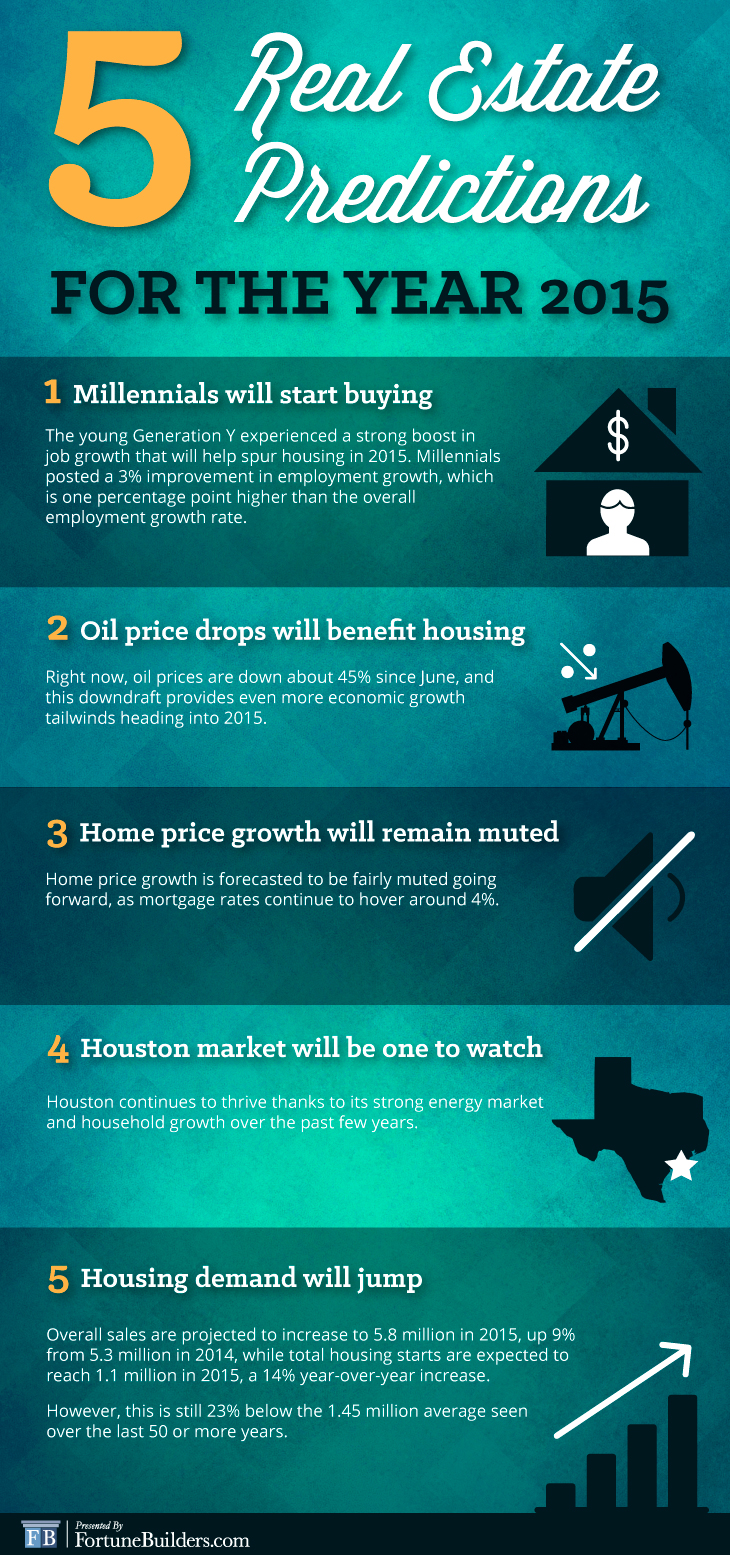Nearly five years separates the entire U.S. economy from the worst part of the most recent financial crisis. That said, there is little doubt that the recovery has begun to gain traction. The housing sector, in particular, appears primed to maintain steady improvements. For all intents and purposes, experts have already projected 2015 to be a great year for the housing sector.
As perhaps the single most important factor leading us in the recovery, employment remains encouraging. Employment grew 2% between November 2013 and November 2014, the strongest year-over-year gain since March 2006. It just so happens that 2006 represented the peak of the last economic expansion.
According to CoreLogic, “Overall, the economy finally appears to be gaining enough momentum to help provide the support that the housing market has needed for stronger recovery. The combination of stronger employment growth and especially millennial job growth makes for solid footing for the real estate market.”
With the recovery where it is, and where it came from, experts have already predicted the following for the 2015 housing market:
2015 Q1 Housing Market Predictions Update
The Drop In Oil Prices Has A Localized Impact On Housing:
The drop in oil prices has proven to have a localized impact. Falling oil prices will dampen growth where local economies are heavily based in the production of oil. In many markets, oil price changes are a leading indicator to housing value changes, but the impact varies based on the composition of the local economy. While some markets positively correlate and have a dampening effect on home prices (meaning when oil prices fall, it will slow the growth or potentially erode home prices), others negatively correlate and can be stimulated by falling oil prices.
Data shows that states with high levels of employment in the oil extraction and related industries continue to have an elevated risk of a housing sector slowdown. North Dakota, Oklahoma and Texas continue to have elevated risks due to their focus and exposure to the oil sector. Texas, in particular, has about a 33 percent chance of a housing decline because of the industry-wide drop in oil and gas exploration. Texas led the nation in job losses in March thanks to the decline in oil and gas prices and resulting cutbacks by energy firms.
On the other hand, many local economies are stimulated by low oil prices – thereby fueling demand and housing price growth.
Appreciation Has Remained Tempered:
The growth in sales prices for single-family homes continued to slow in the first quarter. On a national basis, prices appreciated 4.2 percent (seasonally adjusted) year-over-year, compared to 4.4% percent (seasonally adjusted) at the beginning of 2015. While price growth across the nation slowed overall, collectively the major American cities saw their prices accelerate. An index tracking single-family home prices in 20 major U.S. cities gained an annual 4.8 percent in February, up from a 4.3 percent increase in January.
Housing Demand Increased:
The demand for housing has indeed increased since our last prediction was made. The increase can be attributed to the expansion of the economy and the participation of first-time homebuyers. Fueled by a stronger job market, housing sales activity is picking up steam, with existing home sales up 6.1 percent nationwide.

